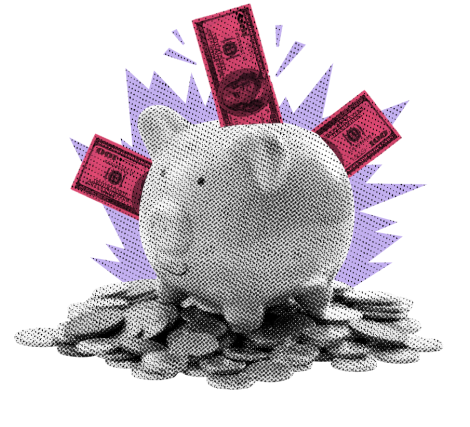
Nasdaq rebounded 25% from April lows. Are we out of the woods or just deeper in the thicket?
KEY TAKEAWAYS
- The Nasdaq fell 25% in 32 trading days but has now rebounded the same amount
- Tariffs escalated sharply in February, sparking peak fear
- Markets began to recover as trade negotiations resumed, especially with China
- Investor sentiment is swinging from despair to cautious hope
- Potential tax deal in Congress could further stimulate the economy
MY HOT TAKES
- “Liberation Day”-style tariffs were a clear policy overreach that backfired economically
- Even Trump’s biggest critics should admit a course correction is underway
- Investor panic is natural—but usually the worst time to sell; is this time different
- Hope is a valid emotion, but not a strategy
- You can quote me: “This was a calamity… a recipe for stagflation, that most feared monster under the bed.”
I read the news today, oh boy… Were you convinced that it was all over? Did your imposter syndrome led you to ask yourself “what am I doing here,” and contemplate selling everything. Were you ready to start hoarding canned food in a hole in your backyard? Did your political views cause you to do something your brokerage account may regret? Don’t worry, it’s all normal… except the canned food.
This has been quite a ride so far. We witnessed elation melt into disappointment, which then led to fear. Then came the doubt followed by hope. And now we are left wondering. Wondering what to do next.
Let’s start with the following chart. Have a look then keep reading.

This is a chart of the tech-heavy Nasdaq Composite Index. If you looked at it without reading the fine print or my chicken scratch, it doesn’t look too bad, but trust me, it is extreme. I want to point out that from highs hit on February 19th through a low close on April 7th, the index gave up some -25%. That’s -25%! How did that feel? Don’t worry, nobody–nobody normal felt good on February 19th. 32 trading days to erase 25% of your wealth. Chinese tariffs were just freshly ratcheted up to145%. Peak fear paralyzed the market.
The following morning, I was on Fox Business with Maria Bartiromo, and I asserted that it was a buying opportunity for the stocks that dominate the Nasdaq, and the other guests agreed. I will confess that I was somewhat nervous about that admission. You see, many of us were expecting the President to run his typical play: shock and awe followed by a negotiated solution, but by the time markets fell into bear territory, fear set in. Fear that the President was more interested in making bold political moves than negotiating better trade terms for the US.
Every time the administration ratcheted up tariffs, added a new product, or a new country, we would question ourselves. It made no sense that a businessperson of Trump’s renown would allow the markets to exact even greater pain. Finally, we capitulated and began to doubt that there would ever be a solution to this newfound mess. Treasuries were selling off and so was the Dollar, indicating that investment capital was leaving the US. Consumer and business confidence fell through the floor. All this despite the fact that the President showed first signs of relenting just two days after markets hit bottom.
Could he–would he be able to pull this off? After all, “liberation day” added pretty much every county in the world to the tariff list. This was a calamity. Tariffs are unarguably bad for the economy, throttling business profitability and causing inflation for consumers. Trade wars cause all sorts of supply chain problems, slowing economic growth and adding to inflationary pressure. It was a recipe for stagflation, that most feared monster under the bed.
Soon, the President made it clear that his administration was seeking deal resolutions. Doubt still hung over the markets like a thick haze. At any moment someone could draw the President’s ire, causing him to confound any hopes of recovery. Chairman Powell became that someone, adding further to the confusion and negative sentiment.
But in these past few weeks hinting, which led to speaking, ultimately led to action. The administration was, indeed, negotiating with early results coming in last week with a UK/US announcement. Then came the big fish, the President’s white whale, China. The weekend was welcomed with doubt but bid adieu with hope.
Progress with Chinese negotiators exceeded expectations. Indeed, it appears, at the moment, that both parties are interested in striking a deal. That was enough to push the Nasdaq, shown above, into a bull market. That’s right, yesterday’s thrust pushed the index through the 20%-from-lows threshold to a nearly 25% gain.
Now what? Well, more negotiations. First of all, the China deal is not yet signed nor is the UK deal. EU, Japan, and South Korea deals may not be so simple. All the while tariffs are still in effect, which means US companies are paying extra to import. Unemployment feels like it is ticking higher with every new news release. Today, we will see if inflation has been reignited.
The bottom line is that, despite your politics, you must give the President credit for realizing that “liberation day” may have been a mistake and has sought to turn things around and negotiate. Hopefully, those negotiations will lead to a better position for the US in international trade. It is important to note that tariffs are not going away and that conclusive deals are far away. There will be a cost to economic growth and the big question is how much.
We now turn to Congress where Reps are coming close to a deal which would extend the 2017 Tax Cut and Jobs Act with what is being dubbed “One Beautiful Big Deal.” Again, disregarding your politics, the OBBD would certainly be stimulating to the economy, and likely, to your portfolio as well.
My emotion today is hope. Hope that we can soon go back to analyzing company fundamentals to make our investment decisions. Folks, this is early days, and we have a lot more ground to cover before markets resemble their formal, bullish selves, before hope can return to elation, but you must be in it to win it. My friends, please be in it… but carefully.
YESTERDAY’S MARKETS
Stocks gained big time in a face ripper rally in response to positive developments in trade negotiations with China. The Nasdaq managed to push into bull market territory and the Mag 7 crossed its 200-day moving average Rubicon, leaving investors wondering if it can stay there. 2-year Treasury Note yields jumped as traders push rate cut dates out to autumn.

NEXT UP
- Monthly Consumer Price Index / CPI (April) may show that inflation picked up to 0.3% from -0.1%. Analysts are looking for signs of tariff-driven inflation with this latest print covering active tariffs.
.png)

